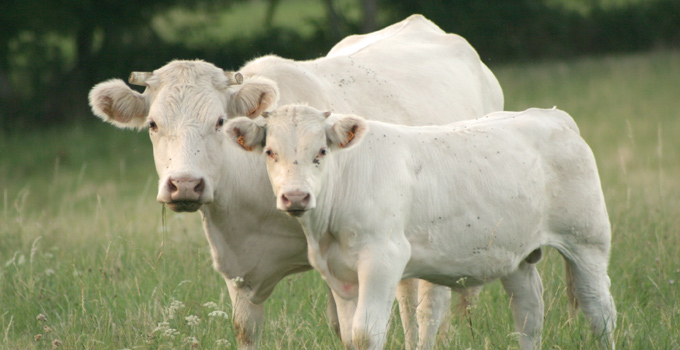Creep feeding — the process of supplementing calves before they are weaned — has changed a lot over the years.
A few generations ago, some producers would provide young animals with straight oats as a source of additional energy. Later, producers moved to a more balanced ration containing protein, energy and minerals.
With continued advancements in rumen development and calf health research, creep feeding has progressed even further. Today, many pre-conditioning programs include high-quality, nutrient-dense grain and protein concentrates. Creep feeds can also include preventative medications for common issues like coccidiosis, as well as chelated minerals that are more highly available to the animal.
“It’s not something everyone does, but once people try it, it’s rare that they go back to not feeding a creep feed. They see the benefits on both the calf and the cow,” said Amanda Van De Kerckhove, Ruminant Nutritionist with Federated Co-operatives Limited, which delivers important animal nutrition products to producers and Co-op locations across Western Canada.
“When we are going through a drought, I recommended it to a lot of producers. If you are short on forage and have a long season ahead, creep feeding will free up forage for the cows to eat. While it doesn’t reduce the nutritional demand on the cow, as calves still prefer milk as their first source of nutrients, calves prefer creep feed over forage, so offering it frees up forage for the cow to eat.”
But that’s not the only benefit. Here are a few other reasons why you might consider introducing your animals to creep feed.

Increased weights
Creep feeding stimulates rumen development, which helps to facilitate growth and produce heavier calves at weaning — a benefit to both purebred and commercial producers who are weaning calves in either the spring or fall.
On average, creep-fed calves are 10 to 27 kilograms heavier at weaning, according to Alberta Agriculture and Forestry.
“Improved rumen development is going to stick with that animal through its life,” said Van De Kerckhove. “They’re able to digest nutrients better sooner and you’ll definitely see that difference, which will allow them to reach their genetic potential for growth.”
Easier weaning
Calves exposed to grain and pellets will also adapt more easily to those feed sources after they are weaned, which reduces stress during this critical period.
“They know what feed is,” said Van De Kerckhove. “They’re not going to have that growth drop that they might if their main source of nutrients, milk, is removed and they’ve never been exposed to grain or pellets before.”
This makes weaning easier and can even facilitate early weaning. But no matter when weaning occurs, the benefits to the calf are clear: with reduced stress, the animal’s intake is more likely to remain normal, which helps to maintain gains and prevent illness.
Bridge the gap
When creep feeding, the biggest gains will be seen when forage quantity or quality is low because of drought or overgrazing or when milk production from the dam is poor.
Your local Co-op Feed Team member can help you assess the costs of creep feeding and determine how and when it may benefit you the most.
“Some people creep feed right from when the calves are very new and some people don’t start until shortly before weaning and they just try to get that extra push as the forage quality is declining,” said Van De Kerckhove.
“There are equations you can use to see if it will pencil out, but sometimes it is about more than economics, especially in times of drought.”
Co-op provides Western Canadian producers with a comprehensive lineup of creep feeds. To discuss how these products can benefit your nutrition program, speak with with a Co-op Feed Team member or visit your local Co-op Agro Centre.

